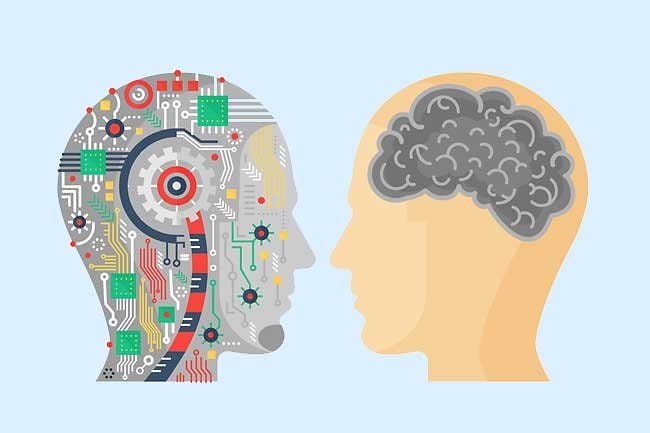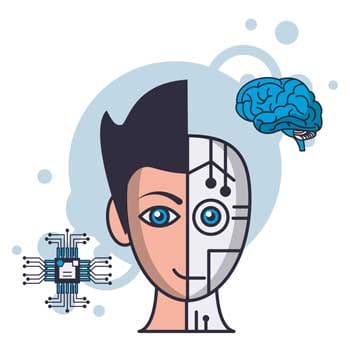AI Art: Threat or Opportunity for Artists?
We explore the fascinating intersection of creativity and technology: the world of AI-generated art. We shine a light on a topic that is stirring up quite a bit of discussion in the art community – Is Ai Art Theft? We’ll dive into the heart of the matter, addressing the burning questions, the hopes, and yes, the fears that artists might have about AI and its role in the art world.

We’re living in an age where technology is evolving at a rapid pace, and it’s touching every aspect of our lives. The art world is no exception. Artificial Intelligence, or AI, has started to dip its digital toes into the creative pool, leading to a whole new genre of art known as AI-generated art. This has sparked a lively debate among artists, art enthusiasts, and technologists.
In this article, we’ll be addressing some key questions that are on everyone’s mind: Is AI-generated art a form of art theft? Could AI replace human artists? What are the concerns artists have about AI? And perhaps the most philosophical question of all: Is AI-generated art really art?
While these questions might seem daunting, it’s important to remember that every new technological advancement brings with it a wave of change and a period of adjustment. The introduction of photography, for instance, was met with similar debates and concerns in its early days. But artists didn’t just adapt; they thrived, using photography as a tool to enhance their work and express their creativity in new ways.
The goal of this article is not to fuel fears but to inform, engage, and inspire a dialogue. We’ll explore the complexities of these issues, but we’ll also look at the opportunities that AI offers to artists. We’ll delve into the current legal landscape around AI art and copyright, and we’ll offer some advice on how artists can protect their work and thrive in this new era.
So, let’s embark on this journey together, exploring the brave new world of AI and art. It’s a world full of potential, where artists can harness the power of AI to push the boundaries of creativity. Let’s dive in!
Understanding AI Art
AI-generated art might sound like something straight out of a science fiction movie, but it’s very much a part of our reality today. To fully grasp the implications of AI in the art world, we first need to understand what it is and how it works.

Imagine a virtual artist, tirelessly creating art, experimenting with different styles, and never running out of ideas. This is essentially what AI art generators do. They use complex algorithms to create unique pieces of art. But unlike human artists, they don’t need breaks, inspiration, or even a paintbrush!
These AI “artists” learn from thousands, sometimes millions, of images to create their own art. They don’t copy these images, but analyze them, understand the patterns, and use this knowledge to create something new. It’s a bit like how a human artist might study the work of others to learn and grow, but on a much larger scale.
Now, you might be thinking, “That sounds impressive, but it also sounds a bit scary. Could these AI artists take over the art world?” It’s a valid concern. But it’s important to remember that AI art generators are tools, and like any tool, they’re only as good as the person using them. They can’t replace the creativity, passion, and personal touch that human artists bring to their work.
Text-to-Image Gereative Ai
AI art is often referred to as “text-to-art” generators because these AI tools use text prompts as input to generate visual art. The text prompt acts as a guide or instruction for the AI to create a visual representation. For instance, if you input the text “a futuristic cityscape at sunset,” the AI would generate an image depicting its interpretation of that scene.
Creating these text prompts requires a certain level of creativity and understanding of language. The user needs to be able to articulate their vision in a clear and concise manner that the AI can interpret. This involves choosing the right words and phrases to convey the desired mood, setting, objects, and other elements of the scene. It’s a skill that combines elements of creative writing and visual thinking.
This process is made possible through machine learning algorithms. The AI is trained on large datasets of images and corresponding textual descriptions. Over time, it learns to associate certain words and phrases with specific visual elements. When given a new text prompt, the AI uses this learned knowledge to generate a corresponding image.
These “text to art” generators are popular because they allow for a great deal of creativity and flexibility. Users can input virtually any idea or concept they can think of, and the AI will generate a unique piece of art based on that input. It’s a fascinating blend of technology and creativity, opening up new possibilities in the world of art. However, the user’s ability to create effective prompts plays a significant role in the final output.
Ai Art Generators
At the time of writing this article, the most popular Ai Generative Art tools were:
- Dall-E 2 (openAI): This tool is user-friendly and follows word prompts faithfully. It even includes a beta version of an image editing tool that allows you to fine-tune the AI-generated results.
- Discord (Midjourney): Known for generating the most photorealistic images, it uses the ‘Discord’ social platform and can be accessed via your web browser or downloaded as an app.
- Bing Image Creator: Powered by a more advanced version of DALL-E, it produces high-quality results quickly. It can be accessed in the same place where you can access Bing’s AI chatbot, Bing Chat.
- Dream by WOMBO: This mobile app allows you to create art with the simple input of a quick prompt. It also allows you to remix your own images.
- Stable Diffusion: This AI art generator uses a process called diffusion to create images. It starts with a random field of noise and then edits it in a series of steps to match its interpretation of the prompt.
Is AI Art Theft?

Art and creativity are sacred to artists. They pour their hearts and souls into every piece they create. So, when we talk about AI-generated art, it’s natural for artists to questions “Is AI art theft?”, and “Is AI stealing the works of living artists?”
Let’s discuss the issue.
AI-generated art uses complex algorithms to create something new and unique. But does it steal from human artists? The answer is not as simple as a yes or no.
Think of AI like a student in an art class. It learns from a vast array of images it’s been shown, much like a student learns by studying different artworks. Then, it uses that knowledge to create its own art. It’s not copying and pasting. It’s learning and creating.
That said, we can’t ignore the fact that AI uses existing artwork for learning. This is where copyright issues come into play. Artists have a right to their work, and using it without permission is a breach of that right.
So, what’s the legal stand on this? Well, it’s a bit of a gray area. Current copyright laws don’t fully cover AI-generated art. But that doesn’t mean artists are defenseless. Artists can still protect their work by ensuring it’s properly copyrighted. If they find their work being used without permission, they can take legal action.
Now, let’s look at the brighter side. AI is not an enemy; it’s a tool. Artists can use AI to their advantage. Here’s how:
1. Boost Creativity: AI can provide fresh ideas and inspiration, helping artists break out of a creative rut.
2. Save Time: AI can handle repetitive tasks, freeing up time for artists to focus on the creative process.
3. Explore New Styles: With AI, artists can experiment with different styles and techniques, pushing the boundaries of their creativity.
In a nutshell, AI-generated art is a complex issue. It’s not outright theft, but it does raise valid copyright concerns. As artists, understanding AI and copyright laws can help protect your work. And remember, AI is a tool you can use to enhance your art, not a threat to replace it. So, let’s embrace it and let creativity soar!
Will AI Art Replace Artists?
Artists, breathe easy! While it’s true that AI is making waves in the art world, it’s not here to take over. Think of AI as a new paintbrush in your kit, not a replacement artist.
Let’s break down why:
- AI Needs Human Touch: AI art tools are pretty cool, but they can’t dream up ideas like you can. They need a creative mind to guide them. So, who’s in control? You are!
- AI as a Creative Partner: Imagine having a partner who never gets tired and can churn out ideas in seconds. That’s AI for you! You can use AI to explore new styles, generate fresh ideas, or just play around with different forms of art.
- AI Enhances Skills: Just like how a new paintbrush can help you create different strokes, AI can help you take your art to new heights. You can experiment with AI tools to enhance your skills and create art in ways you never thought possible.
- AI Saves Time: Let’s face it, some parts of creating art can be time-consuming. AI can handle the heavy lifting, leaving you more time to focus on the fun parts of creating!
Ai vs Artists
In my view, AI will not replace artists because art is a deeply human endeavor. It’s a form of expression rooted in our emotions, experiences, and perspectives. While AI can mimic styles and generate impressive pieces, it lacks the human touch – the ability to feel and convey emotions, capture a moment’s essence, or tell a personal story.
| AI | Artists |
|---|---|
| Can create art quickly | Can dream up original ideas |
| Needs guidance | Can guide AI |
| Can’t feel emotions | Can infuse art with emotion |
| Can handle repetitive tasks | Can focus on creativity |
AI operates based on algorithms and data; it does not possess an innate sense of creativity or the ability to think outside the box, which is integral to art. Moreover, art is not just about the end product; it’s about the process, the thought, and the intention behind it. AI can assist and augment the artistic process, but it cannot replace the passion, creativity, and individuality that artists bring to their work. Therefore, artists have a unique and irreplaceable role in the realm of art.
Is AI Art Really Art?
Let’s dive into a hot topic: Is AI art genuinely art? This question sparks a lively debate in the art world.
The Art Debate
On one side, some people argue that art is a human endeavor, filled with emotion, creativity, and personal touch. They feel that AI, being a machine, lacks these human qualities. Thus, the art it creates may not resonate with viewers in the same way that human-made art does.
On the other side, some believe that AI art is indeed “real” art. They point out that AI can create beautiful and unique pieces that can evoke emotion and provoke thought, just like traditional art. They argue that the value of art lies in its impact on the viewer, not in who or what created it.
Creativity and Human Touch in Art
Creativity is a key element in art. It’s about coming up with new ideas, experimenting with different techniques, and expressing oneself in unique ways. Human artists often pour their thoughts, feelings, and experiences into their work, giving it a depth and richness that is hard to replicate.
AI, on the other hand, learns from data. It analyzes thousands of images, identifies patterns, and uses this information to generate new images. While this process can result in stunning visuals, some argue that it lacks the creativity and human touch that make art special.
| AI-Generated Art | Traditional Art |
|---|---|
| Created by a machine | Created by a human |
| Learns from data | Draws from personal experiences |
| Can create art quickly | Creation process can be slow |
| Can produce infinite variations | Each piece is unique |
| Lacks personal touch | Has a personal touch |
As you can see, AI-generated art and traditional art have their own strengths and weaknesses. They offer different experiences and appeal to different tastes.
So, is AI art really art? The answer depends on how you define art. If you believe that art is about expressing human emotions and experiences, then you might lean towards “no”. But if you believe that art is about creating something beautiful, thought-provoking, or impactful, then you might lean towards “yes”.
Remember, art is subjective. What matters most is how it makes you feel and what it means to you.
The Way Forward
As we’ve seen, AI art is here to stay. It’s transforming the art world, offering new creative possibilities, and changing the way we think about art. But this doesn’t mean that human artists are becoming obsolete. In fact, it’s quite the opposite.
AI art requires human input. The artists decide what the AI should learn from, how it should process this information, and what kind of art it should create. They play a crucial role in shaping the AI’s output. In this sense, AI is a tool that artists can use to enhance their creativity and expand their artistic horizons.
Copyright Protection and Vigilance
However, the rise of AI art also brings challenges. One of these is the issue of copyright protection. Artists need to be vigilant in protecting their work from unauthorized use by AI. They need to understand the legal implications of AI-generated art and take appropriate action if their work is used without their permission.
Embracing AI Tools
On a positive note, AI offers exciting opportunities for artists. It can help them generate new ideas, speed up the creative process, and create art in styles and forms that they may not have considered before. By embracing AI tools, artists can push the boundaries of their creativity and create art that is truly unique.
In fact, AI can be a powerful ally for artists. It can help automate some of the more tedious aspects of creating art, leaving artists more time to focus on the creative process. It can also offer a fresh perspective, pushing artists to explore new styles and ideas.
| Let’s take a look at some of the ways AI is already helping artists: |
|---|
| Idea Generation: Stuck in a creative rut? AI can help generate new ideas, offering a fresh perspective. |
| Faster Creation: AI can speed up the creation process, automating some of the more time-consuming tasks. |
| Experimentation: AI allows artists to play around with different styles and techniques, pushing the boundaries of their creativity. |
| Accessibility: AI tools can make art creation more accessible, opening up the world of art to more people. |
Final Thoughts on the Impact of AI on Art and Artists
In conclusion, the impact of AI on art and artists is complex and multifaceted. It brings both opportunities and challenges. It’s a tool that can enhance creativity, but it also raises questions about copyright protection and the value of human-made art.
But one thing is clear: AI is not replacing artists. Instead, it’s offering them new ways to express their creativity and make their mark on the art world. And in the end, isn’t that what art is all about – pushing boundaries, exploring new possibilities, and expressing our unique perspective on the world?
So, let’s embrace AI art, not fear it. Let’s use it as a tool to enhance our creativity and bring our artistic visions to life. Because in the world of art, there’s room for everyone – human artists and AI alike.

